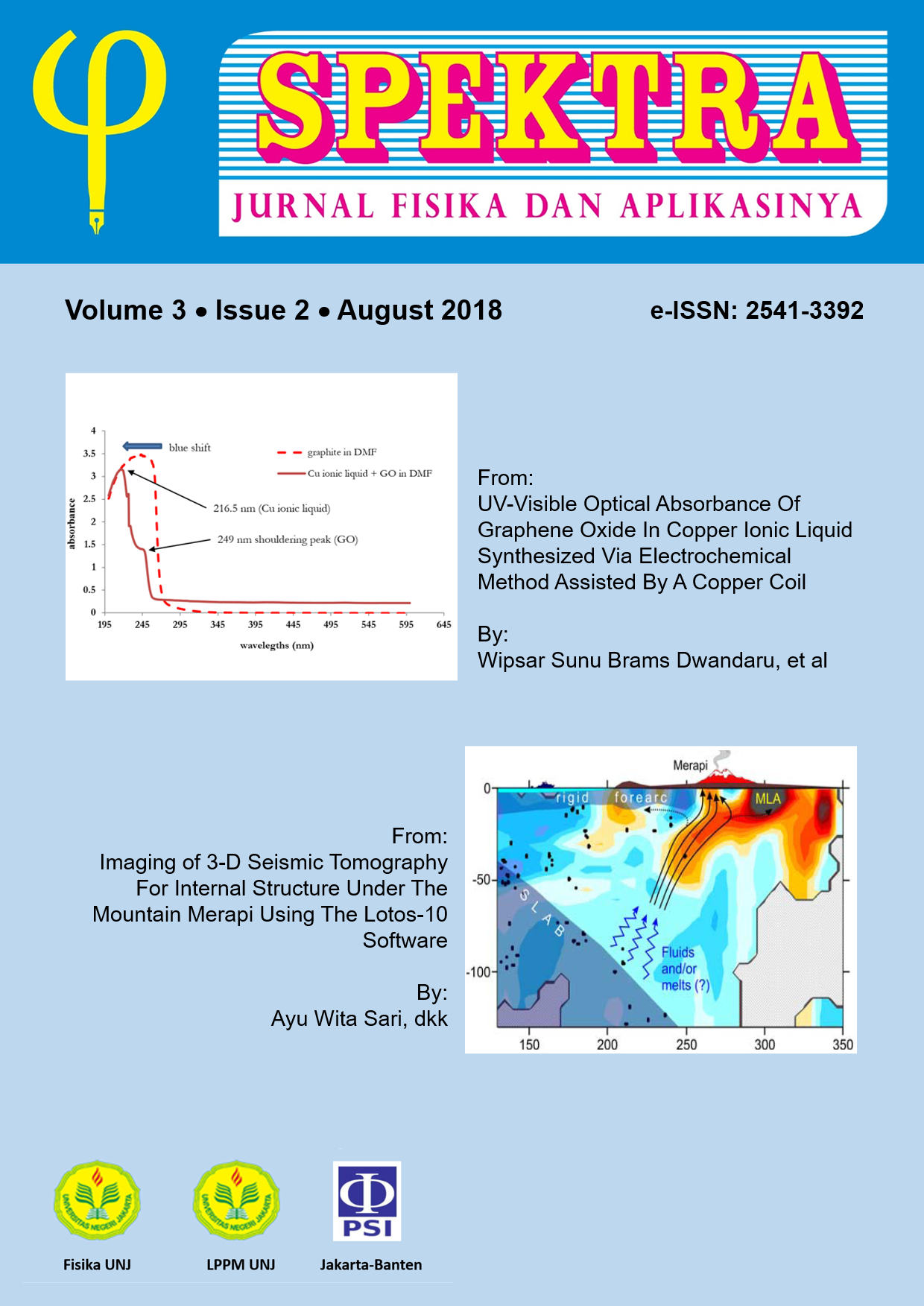FABRICATION AND CHARACTERIZATION OF THE COMPOSITES OF RESIN - HUSK OF RICE AND RESIN - RUB ASH
DOI:
https://doi.org/10.21009/SPEKTRA.032.01Keywords:
Composite, Resin, rub ash, husk of riceAbstract
We have done the fabrication of two kinds of composite material the fillers that we used rub ash for one type of composite and the husk of rice for another, the matrix for both is resin. The resin - rub ash composite, the volume ratio of filler and matrix is 1:1, while in the resin - husk of rice composite we used three volume ratios, those are 1:1, 1:2, and 2:1. After the process of fabrication was done, we did TGA test and three points flexural test for every composite we fabricated. The results of TGA test show that the most significant weight decrease of resin - rub ash composite occurred at 390,29 ºC, while the resin - rub ash composite's most considerable weight decrease occurred at 399,86 ºC. The results of three points flexural test show that elasticity of resin - rub ash composite is 4,97 x 109 N/m2, while elasticity modulus of all kinds of the resin - husk of rice composite is in order of 108 N.m2 and 106 N/m2. Overall, we can conclude that the resin - husk of rice composite is more heatproof and more elastic than the resin - rub ash composite.
References
[2] H. Yuniati, “Efek Penggunaan Abu Gosok dan Serbuk Bata Merah pada Pembuatan Telur Asin terhadap Kandungan Mikroba dalam Telur,†Jurnal Penelitian Gizi dan Makanan, vol. 34, pp. 131-137, 2011.
[3] L. H. Van Vlack, “Polimer dan Komposit,†in Elemen-elemen Ilmu dan Rekayasa Material Edisi Keenam. Jakarta: Erlangga, 2004, pp. 351-392.
[4] D. S. Darsa and M. Rizki, “Karakterisasi Komposit Resin Epoksi Serbuk Kayu,†Prosiding Seminar Nasional Fisika (E-Journal), vol. 4, pp. 5-8, Oct. 2015.
[5] N. H. Mohan et al., “Characterization of Thermal Properties of Pig Hair Fiber,†J. Natural Fibers, vol. 14, pp. 1-7, Jan. 2017.
[6] P. R. G. Hein and L. Brancheriau, “Comparison between Three-Point and Four-Point Flexural Tests to Determine Wood Strength of Eucalyptus Specimens,†Maderas: Ciencia y TeclologÃa, vol. 20, pp. 1-18, Jan. 2018.
[7] S. A. R. Junior et al., “Flexural Strength and Modulus of Elasticity of Different Types of Resin-Based Composites,†Brazilian Oral Research, vol. 21, pp. 16-21, 2007.
[8] A. Mehndiratta et al., “Experimental Investigation of Span Length for Flexural Test of Fiber Reinforced Polymer Composite Laminates,†J. Materials Research and Technology, vol. 7, pp. 89-95, Nov. 2017.
Downloads
Published
How to Cite
Issue
Section
License
SPEKTRA: Jurnal Fisika dan Aplikasinya allow the author(s) to hold the copyright without restrictions and allow the author(s) to retain publishing rights without restrictions. SPEKTRA: Jurnal Fisika dan Aplikasinya CC-BY or an equivalent license as the optimal license for the publication, distribution, use, and reuse of scholarly work. In developing strategy and setting priorities, SPEKTRA: Jurnal Fisika dan Aplikasinya recognize that free access is better than priced access, libre access is better than free access, and libre under CC-BY or the equivalent is better than libre under more restrictive open licenses. We should achieve what we can when we can. We should not delay achieving free in order to achieve libre, and we should not stop with free when we can achieve libre.
 SPEKTRA: Jurnal Fisika dan Aplikasinya is licensed under a Creative Commons Attribution 4.0 International License.
SPEKTRA: Jurnal Fisika dan Aplikasinya is licensed under a Creative Commons Attribution 4.0 International License.
You are free to:
Share - copy and redistribute the material in any medium or format
Adapt - remix, transform, and build upon the material for any purpose, even commercially.
The licensor cannot revoke these freedoms as long as you follow the license terms.

 E-ISSN 2541-3392
E-ISSN 2541-3392  Focus & Scope
Focus & Scope  Editorial Team
Editorial Team  Reviewer Team
Reviewer Team  Author Guidelines
Author Guidelines  Article Template
Article Template  Author Fee
Author Fee  Publication Ethics
Publication Ethics  Plagiarism Policy
Plagiarism Policy  Open Access Policy
Open Access Policy  Peer Review Process
Peer Review Process  Retraction & Correction
Retraction & Correction  Licensing & Copyright
Licensing & Copyright  Archiving & Repository
Archiving & Repository  Contact
Contact  Mendeley
Mendeley 

